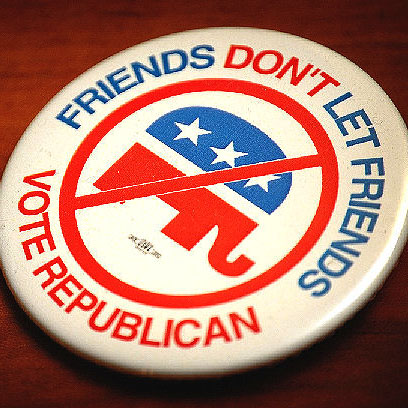
On Election Day 2012, there were 786 candidates for all offices across Rhode Island, from U.S. Senator to Town Sergeant. According to a list provided by the Secretary of State’s office, the make-up was such:
- 301 Democrats
- 209 Republicans
- 116 Independents
- 4 Moderates
- 1 Libertarian (Independent)
- 1 Vigilant Fox (Independent)
- 154 candidates for nonpartisan offices
In evaluating partisan strength, we need to put aside the 154 nonpartisan candidates and the offices they ran for, merely because nonpartisan offices don’t identify party affiliation. Including the federal offices contested (not including the U.S. Presidency), there were 373 partisan officials elected in 2012 (not all offices are contested in a given election year, the total number of offices in this state is at least 505 and the 1992 Census of Governments by the US Census Bureau put the total number of elected offices at 1186).
How did the parties do? Well, of the 301 candidates put up by the Democrats, 244 of them were elected; a win rate of 81.06% per candidate. The Republicans? Of their 209 candidates, just 96 of them made it to elective office, a win rate of 45.93%. Political independents placed 33 candidates, winning 28.45% of the time. The Moderates (and everyone else) had a win rate of 0%.
Basically, with no organization behind them, political independents did about half as well as the Republicans, despite that party’s over-hyped “Strike Force”, their poorly-constructed/conceived “Rhode Island sucks” website, and chairman Mark Zaccaria’s “less-is-more” strategy (which I criticized back in June). Deep organizational/strategic thinking or cheap gimmicks?
The answer is clear from the results: Republicans in Rhode Island were crushed in 2012. With only 11 members in the General Assembly, it is no longer tenable to think of Rhode Island as having two major parties with minor parties like the Moderates and Greens. Instead, we need to think of Rhode Island has having a primary party, the Democratic Party; a secondary party, the Republican Party; and tertiary parties like the Moderates.
Despite the insight to the RI GOP’s issues provided here by Patrick Laverty (running inexperienced candidates for statewide office), he misses the deeper structural problem for Republicans: they’ve largely ceded much of the state to Democrats and independents (a problem exacerbated under Mr. Zaccaria’s time as chair). If you lived in all but one of Pawtucket’s six city council wards or House District 46, after you completed the federal office section of your ballot there wasn’t a single Republican anywhere down ticket.
Republicans may feel strong in towns like East Greenwich, West Greenwich, and Scituate (towns where the majority of voters voted straight Republican for President, U.S. Senator, and U.S. Representative), but even in these towns, Democrats contested town-wide offices and majorities of voters voted for the occasional Democratic Assembly candidate (in East Greenwich, they picked Mark Schwager; West Greenwich went with Leo Raptakis and Lisa Tomasso; and Scituate returned Michael Marcello).
A strategic problem for the Republicans is that they don’t appear to have a plan to actually fix Rhode Island’s problems, and the only ideas they’ve expressed are an anathema to the majority of Rhode Island’s voters. Without an appealing plan or vision, Democrats will continue to accrue the state’s new talent and fresh blood in politics, while the Republicans will remain a party adrift and rudderless. The only question is whether the party will finally drown under a tide of blue, or find a way to reform and provide a serious challenge. It’s a project that will take decades.
CORRECTIONS: An earlier version of this article missed that there were four expressly partisan Moderate Party candidate. It also failed to give a justification for not counting nonpartisan offices. Thank you, Ted Nesi.
An earlier version also incorrectly referred to Rep. Michael Marcello as “Phil Marcello”.

